USED ONE OF OUR LESSON PLANS?
Fill in our survey for a chance to win a Science North YETI mug! We will draw winners quarterly throughout the school year.
Fill in our survey for a chance to win a Science North YETI mug! We will draw winners quarterly throughout the school year.

Students will learn, using optical illusions and knowledge of human perception, about misinformation and digital literacy. Students will understand how easily our senses can be deceived, drawing a parallel to how information can be misleading online.
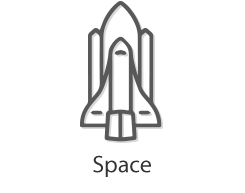
The goal of this lesson is to learn more about how natural and artificial satellites and planets orbit. There are many factors that contribute to the way an object orbits such as weight and gravitational pull. We will also get the chance to cover the difference between mass and weight and learn how the weight of an object can differ depending on the force of gravity. After covering these concepts, we can take a better look at how weight can affect the way something orbits.

Students will explore concepts of mass, weight, gravity, and acceleration through a two-part STEM lunar lander project. They will complete the Canadian Space Agency Lunar Resupply Mission to build a lunar lander retrofitted to hold a Micro:bit. Then they will code a Micro:bit to measure acceleration, both with and without the lunar lander to compare data and the efficiency of their lander. Each group will require two micro: bits as they will be coding the lander Micro:bit to radio data to the “home base”.

Students will learn about the difference between series and parallel circuits using the online platform TinkerCad. They’ll code lights in the circuits to compare the two, then use what they learn to identify a mystery circuit.
In this guided online lesson, students will learn the steps of scientific research, what scientific integrity is and why it matters from a health information perspective. They will explore the scientific process through an experiment about handwashing and learn how scientists use this process to solve real-world problems. Each learning objective is followed up by an online game or hands-on activity to reinforce the concepts.
* Internet connection required
Students will click through an interactive choose your own adventure story to help them prepare for vaccination day and explore the questions they have about vaccines, like:
● What are vaccines?
● How do vaccines work?
● Why are vaccines important?
● How do I deal with vaccine-related anxiety?
* Internet connection required
** Right-click the SAVE TO DESKTOP button and select "Save As..." in order to download the experience to your device for offline use
In the Agents of the Immune System GooseChase experience, students will work independently or as part of a team to complete the missions, learn about the immune system and collect points. Students' submissions in the GooseChase app will remain hidden from other students who participate in the Agents of the Immune System experience.

In this lesson, students will write pseudocode to identify an organism based on its distinguishing characteristics.

Create a simple game in Scratch to demonstrate the damage invasive species can cause to the biodiversity of native ecosystems.

In this lesson students look at what the effect of different airplane designs are on its flying characteristics. We then look at various missions and see what airplane design is best suited to complete it. We then modify the designs to suit each mission. The lesson touches on coding principles by following a process from design to testing to revision and re-testing.

Students build a number of different paper airplanes and then systematically test them. Through a process of elimination, they find the best design to match their criteria. We are modeling what the design process for real airplanes is and make connections to the testing done with flight simulators before an airplane is ever built. To extend the activity, students can build their own flight data analysis tool using Scratch.
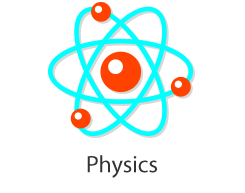
Quickly find the centre of gravity for different objects, even if the weight is unevenly distributed.
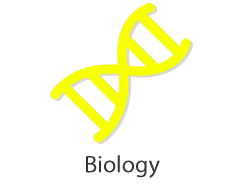
Students will learn how plants, animals and humans are interconnected and interdependent. They will identify the relationships between living and non-living things in the environment and create a food web with Ontario species.

In this lesson, students will deeper their understanding of electricity and circuits, while being introduced to the idea of algorithm design (specifically if/then statements), through creating representations of circuits using groups of peers and a range of physical education equipment in the gymnasium.

In this science coding lesson, students will have the opportunity to explore the Ozobot and use it to demonstrate their understanding of Electricity and circuits.

This is lesson one in a five lesson unit on flight. We explore flight by looking at it from a historical perspective. Each day the students will build something that flies. We will start with the earliest experiments on flight and build a kite.

This is lesson two in a five lesson unit on flight. In this lesson we focus on better understanding the properties of air.
Accordion content 1.

This is lesson three out of a five lesson unit on flight. In this lesson we learn about the early modern inventors dreaming of flight and will attempt to construct some of our own flying devices (paper airplanes) and finally look at what are the forces of flight.

This is lesson four out of a five lesson unit. We are now up to the development of true heavier than air flight in our historical review. Students will modify their gliders (paper airplanes) from the previous day to learn how they can be controlled.

This is lesson five out of a five lesson unit. Students will build a simple model helicopter and learn about the connection between the forces of flight and airplane controls.

This is lesson one of a series of five lessons centered around a space mission to distant planets. Before heading into space all explorers of the universe need to first learn about it. This lesson focuses on the solar system and its scale.

This is lesson two of a five lesson unit centred around a space mission to distant planets. Students will design a spacecraft to take astronauts on a long mission into space. This lesson will also stimulate their creativity and get them to analyze the challenges and possible solutions for themselves.

This is lesson three of a five-lesson unit centered around a space mission to distant planets. The story of the space mission continues. This lesson focuses on launch and living in space, and the value of space exploration.

This is lesson four of a five-lesson unit centered around a space mission to distant planets. Students have landed on a distant planet. This lesson will focus on alien life, and how the diversity of life on Earth has developed to adapt to the conditions it lives in.

This is lesson five of a five-lesson unit centered around a space mission to distant planets. Students will model the Solar System and learn about the phases of the moon. Students will also learn about the rest of the Universe.

This is a Pre Activity for the Human Organ Systems School Program at Science North. In this lesson, the functions and main components of the respiratory and circulatory systems and their interactions within the body are explored. Using materials provided, students make their own listening device to listen to the sounds their body makes. They can use it to listen to their heart, intestines, stomach, etc.
Lesson Plan

In this lesson, students group like objects according to their own hierarchy of classification and make their own dichotomous key. The scientific classification hierarchy – Domain, Kigdom, Phylum Class, Order, Family, Genus, and Species is also explored.
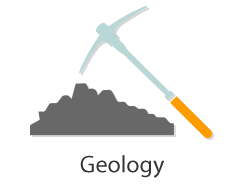
Post Activity
The aim of this post activity is to reinforce the concepts learned in the Rocking’ Detectives school program by using their new skills to make identifications of unknown “rocks”. Students can also see how what they learned is actually useful in the real world and gives them greater knowledge of the world around them.
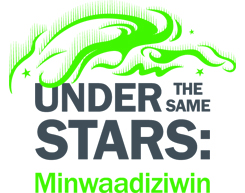
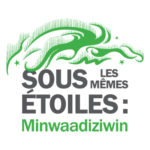
Post Activity
After exploring a few cultures’ different constellations students will have the chance to create their own constellation and legend or story to accompany it.
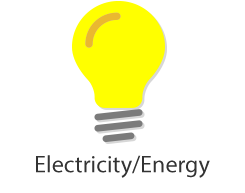
In this lesson, students will create and test a simple electrical circuit using a fruit or vegetable as the battery. In doing so, they will learn about the properties of conductors and become familiar with appropriate science and technology vocabulary such as electrolyte, conductor, and electrode.

In this lesson, students will participate in a town hall debate with each group representing a unique role related to the protection or development of a protected ecosystem.